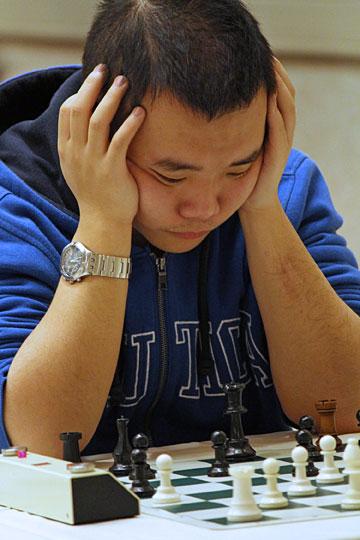
The Best Moves Never Played - Tactics Part 5
Today's article is the last one in the "Tactics" series. The positions presented today show the role of tactics in modern practice. We will start with an example that shows how in complex strategic battles grandmasters of the highest caliber can miss rather straightforward tactics. If grandmasters miss these kinds of tactics then amateurs will miss them for sure, and only the unbiased eye of the computer can see everything. My purpose here is to show that tactics do play a key role in strategic battles and that both players will miss some tactics during a real game, due to the pressure of the ticking clock. I will conclude with two examples that are rather unorthodox.
The first few examples are from the game Li Chao - Kacheishvili. The opening was the Sicilian Hedgehog, meaning that the first 30 moves were played in a slow, positional manner. One pair of minor pieces was traded which favored black, since black was the side with the space disadvantage. White claimed space on both flanks, ensuring piece activity, but this operation left white with both pawn and kingside weaknesses. Black lost a pawn but could reclaim it with a small tactical operation, after which the position remained close to equality.
The game was eventful and the evaluation of the position changed very fast. Black increased their control over the dark-squares, seeking positional domination. White could have exchanged the bishop and rooks to end up in a much better endgame but instead chose to keep the tension in the game by improving their king position. Bringing the king up did not really improve the position because the king was weak and white should have agreed to a three-move repetition. Playing for a win is risky, especially with an exposed king. Here, it is black who misses a winning continuation:
Black rightly declined the three-move repetition and after another series of complex decisions ended up in the following position. The tactic that could have followed is very beautiful and features the motifs of deflection and fork. Both players had been playing on their increment only, which possibly explains why Kacheishvili did not find this winning move:
This game is really impressive - both players declined a three-move repetition and kept fighting on. This game lasted over six hours, so it is understandable that the players got tired and blunders followed. Overall, the game is rich with strategic and tactical ideas that we explored here.
Next, I would like to present you a position that has a highly unorthodox tactical motif. White's rook has the d3-square to retreat to but where would it go if we took away this square after fxe4? Right away fxe4 doesn't work because the e5-pawn is under attack but what if we first we deflected the knight?
Analyzing a line of the Gruenfeld defense I came upon one of the critical games in this opening where white had a spectacular attack and the lines looked more or less forced. However, it turns out that the final position is not losing for black but in fact is much better! I don't really know whether black lost on time or resigned but the lesson to be learned is that one can find tactics even in a seemingly helpless position:
Next article we will move to studying positions where a player has to make a decision based on an evaluation of the position that arises after a series of tactical blows or long forced lines.






